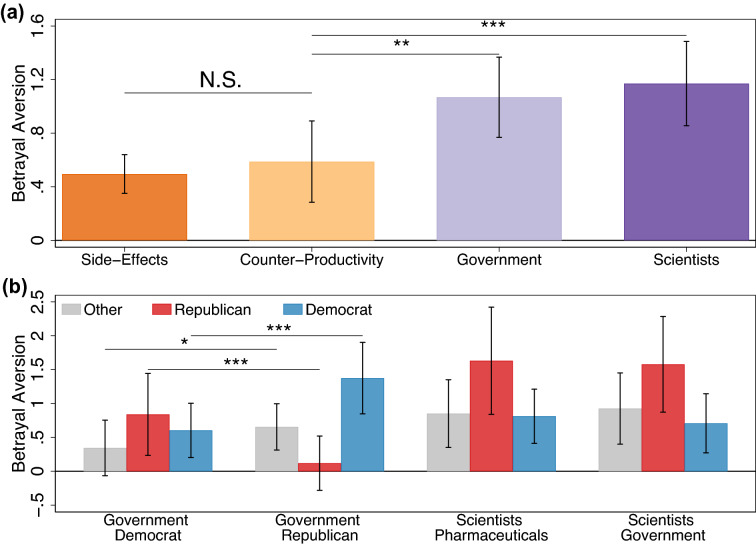Figure 3.
Betrayal aversion across betrayal sources. (a) Betrayal aversion across betrayal source conditions (see Table 4; = 395; = 97; = 102; = 94). For Government (Scientists), the lowest willingness to get the vaccine between Democrat or Republican governments (Pharmaceutical or Government scientists) is used to calculate betrayal aversion. Betrayal aversion was greater in both the Government and Scientists conditions in comparison to the Side-Effects condition (p < 0.010; asterisks omitted for clarity). (b) Betrayal aversion by participants’ political orientation for the two betrayal treatments: Government ( = 29; = 25; = 48) and Scientists ( = 27; = 19; = 48). Error bars denote 95% confidence intervals. Two-sided t tests (paired tests in (b) only): ***p < 0.01, **p < 0.05, *p < 0.1, N.S. non-significant.

